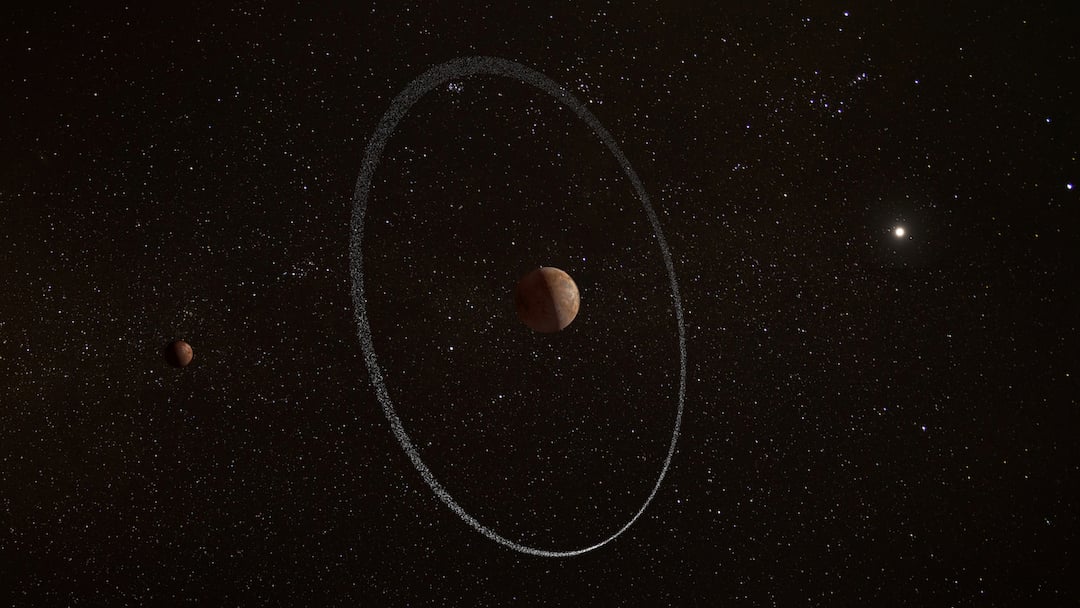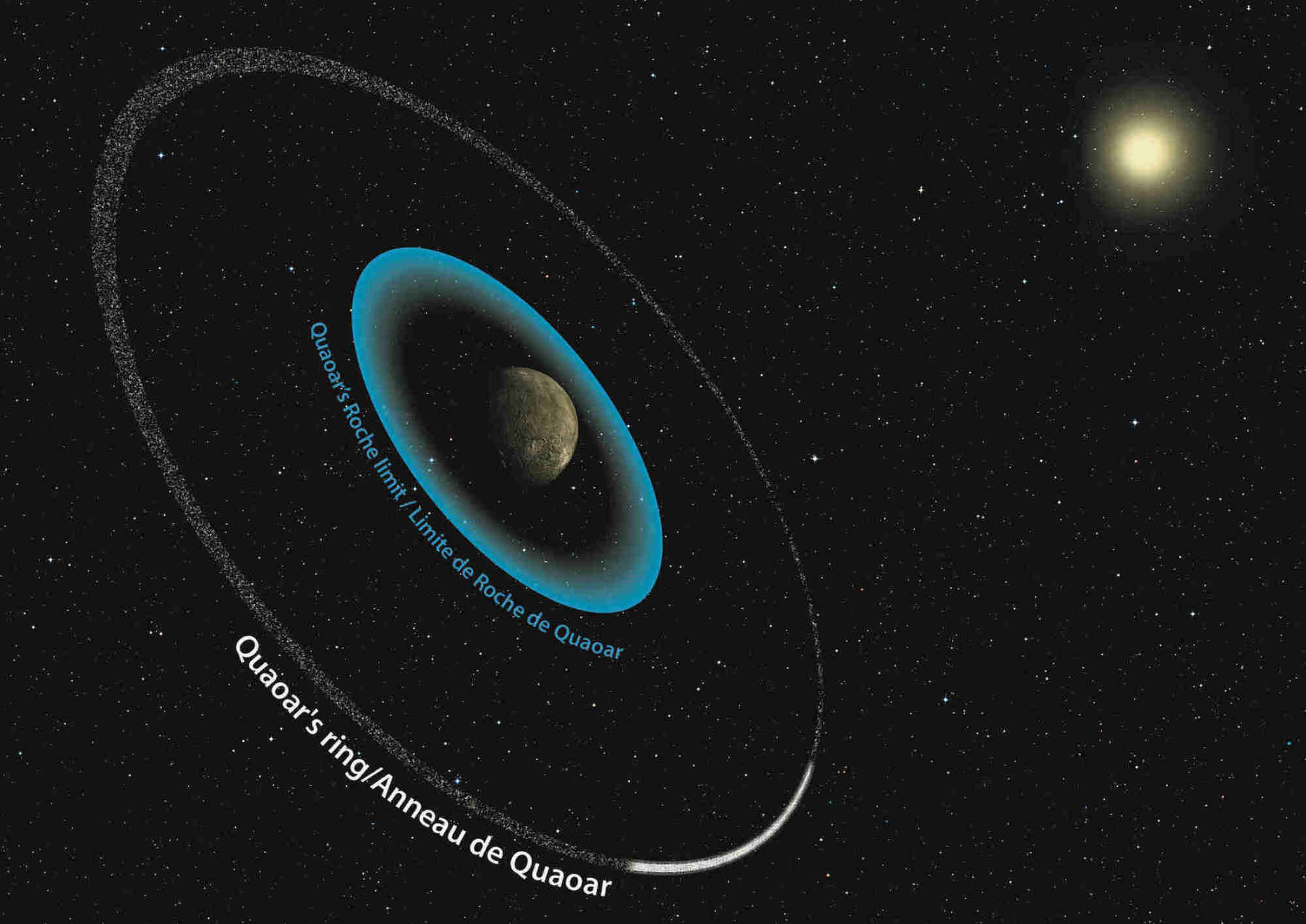
Rings are special, dazzling rarities in our solar system. Now, astronomers have found that an extremely distant world — beyond even Pluto’s orbit — is encircled with unusual rings.
Scientists reported that the frigid dwarf planet Quaoar, a round body that doesn’t quite meet all the definitions of a planet, has a system of rings enduring at an impressively far distance away from Quaoar. The detection is unexpected, because researchers didn’t think rings could survive at a relatively far distance from the celestial body they orbit. (This distance is detailed below.)
Astronomers still have questions about how such rings form and endure.
“Everyone learns about Saturn’s magnificent rings when they’re a child, so hopefully this new finding will provide further insight into how they came to be,” Vik Dhillon, one of the study’s authors and a scientist at the University of Sheffield’s Department of Physics and Astronomy, said in a statement. The researchers published their research in the journal Nature on Feb. 8.
No, there’s no clear image of Quaoar and its (presumably glorious) rings. These relatively small objects are just dots in even our most powerful telescopes. Quaoar is some 4 billion miles away and, at about 690 miles across, half the size of Pluto — also a dwarf planet.
Yet clever astronomers sleuthed out the rings. They used the world’s largest optical telescope (a telescope that views visible light), the 34-foot-wide Gran Telescopio CANARIAS in the Canary Islands off of Spain, and mounted a specialized camera (the HiPERCAM) to the gargantuan instrument. As Quaoar transited through space, the camera was sensitive enough to detect the dwarf planet blocking light as it passed in front of a distant star. Astronomers saw two “dips in light,” one before and one after Quaoar passed through the light. This is “indicative of a ring system around Quaoar,” explains a press release from the University of Sheffield.

Credit: Paris Observatory
Astronomers can count, using just two hands, the number of solar system objects that have known rings: Jupiter, Uranus, Neptune, famously Saturn, and two smaller objects called Chariklo and Haumea. And now Quaoar.
Yet, unlike Quaoar, these other rings exist pretty close to their parent object. At such a close distance, strong forces from the nearby objects stop the rings from fusing together and forming moons. Previously, scientists thought rings couldn’t exist out past a distance of three “planetary radii” — relative to whatever object or planet the rings are orbiting. For example, Saturn’s brilliant rings are found within this distance, known as the “Roche Limit.” But Quaoar’s rings are quite unusual. Compared to Saturn, these rings are located twice as far away, at over seven planetary radii.
Want more science and tech news delivered straight to your inbox? Sign up for Mashable’s Top Stories newsletter today.
“It was unexpected to discover this new ring system in our solar system, and it was doubly unexpected to find the rings so far out from Quaoar, challenging our previous notions of how such rings form,” said the astronomer Dhillon.
Indeed, we can expect the unexpected in our diverse solar system. After all, our cosmic neighborhood is teeming with surprises.
This story was originally published on Feb. 8 and has been updated with more information about the ringed-object Quaoar.
